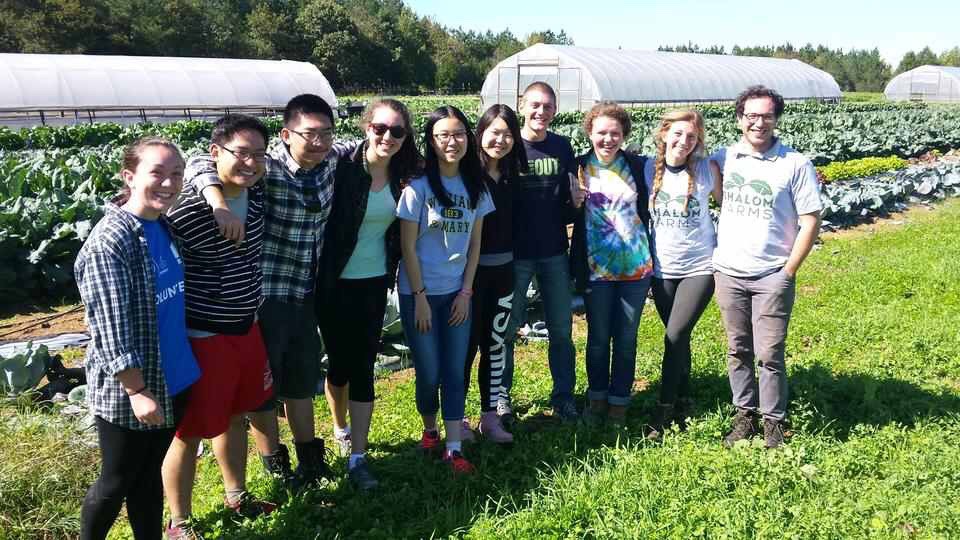Can you imagine living miles away from the nearest grocery store? It is hard to even wrap my head around not having a Food Lion or Safeway nearby. While our standards for grocery stores may range from Trader Joe’s to Whole Foods, the reality is some people are relying on gas stations for their dinners.
According to Feeding America, a national non-profit dedicated to eradicating hunger, about 12 percent of Virginians are food insecure — residents who lack access to nutritional food. Many of these residents live in food deserts or large geographic areas that are missing mainstream, affordable grocery stores containing healthy produce.
So why should you, College of William and Mary student living comfortably off a practically unlimited meal plan option, care? Think about the consequences of 48.1 million Americans living in food-insecure households. What does that mean for our national healthcare system when people don’t have access to healthy food? What does that mean for your taxes when there are more needs for social programs? What does that mean for our education system when kids can’t perform optimally because they can’t concentrate? What does that mean for our future? Nothing good. That is evident.
The biggest key I found to their success was direct outreach and communication with the community.
Over fall break, I joined a dozen College students on one of the Office of Community Engagement Branch Out service trips to Shalom Farms. The farm is based right outside Richmond, where the percentage of food-insecure residents is at a whopping 20 percent.
The problem of food insecurity is not an easy one to solve. And often the solutions that are thrown at it involve canned soups and processed sweets. Fortunately, I was able to learn about alternative solutions through Shalom Farms. The minute I stepped out of the car and gazed out at the lush green fields filled with Saturday morning volunteers, I knew I was in for a treat. This treat exceeded the homegrown sweet potatoes and rainbow chard we had for dinner. I learned about a model that can be used to provide environmentally sustainable produce to food insecure areas.
Shalom Farms grows about 110,000 pounds of produce a year, but sells only 5 percent of its products for profit. The rest is donated to food banks and community partners. The biggest key I found to their success was direct outreach and communication with the community. In their program, the Youth-Run Farm Stand, Shalom Farms provides children the opportunity to run their own produce stand and keep half the profits. In another initiative, the Prescription Produce Plan, families from food insecure areas meet with someone from Shalom Farms to come up with the right amount of produce for their family for the week. From there, the family members can take their food “prescription” to the Shalom Farms food stand to retrieve their fresh fruits and veggies. Lastly, the farm’s Healthy Corner Store Initiative works by selling their produce in existing corner stores and gas stations that do not sell fresh produce.
Even with their numerous projects, quality is not sacrificed. Everything from the rainbow-colored Swiss chard to the bright red bell peppers have remained untouched by chemical pesticides. Instead, Shalom Farms uses various methods to deter insects and enrich the soil. For example, they use compost and rotate their crops to help rejuvenate the soil.
It won’t be easy, but initiatives like that of Shalom Farms are fighting the problem one vegetable at a time.
On our last day of work, we snagged bunches of dark green collards, rubbed the dirt off sweet potatoes and prepared them for the week’s distribution. So alas, a healthy sustainable cycle is not only possible — it is happening. How are we going to solve these large issues of food insecurity? It won’t be easy, but initiatives like that of Shalom Farms are fighting the problem one vegetable at a time.
Could a similar concept be applied here in Williamsburg? According to a 2008 census data, 20.7 percent of Williamsburg is food insecure. The USDA defines food insecurity as meaning “access to adequate food is limited by a lack of money and other resources at times during the year.”
We live in a privileged bubble here on campus. Next time you start to complain about the Sadler Center’s meals, remind yourself that people all around us are struggling with this very real problem. We should all take a step back and look at the topic of food from a systemic lens. Ask yourself what kinds of food you are eating and how those food choices affect the environment and community. Who doesn’t have access to food and what can we do to help?
In addition to educating yourself about the issue, take individual actions or join in on events organized by on-campus clubs working to fight food insecurity. Campus Kitchens and Food Justice in the Student Environmental Action Coalition are just two of your options. Brainstorm with students around you about how you can go about solving such a complex problem. Start following your questions and you will never see food the same way again.
Email Talia Schmitt at taliaschmitt2@gmail.com

